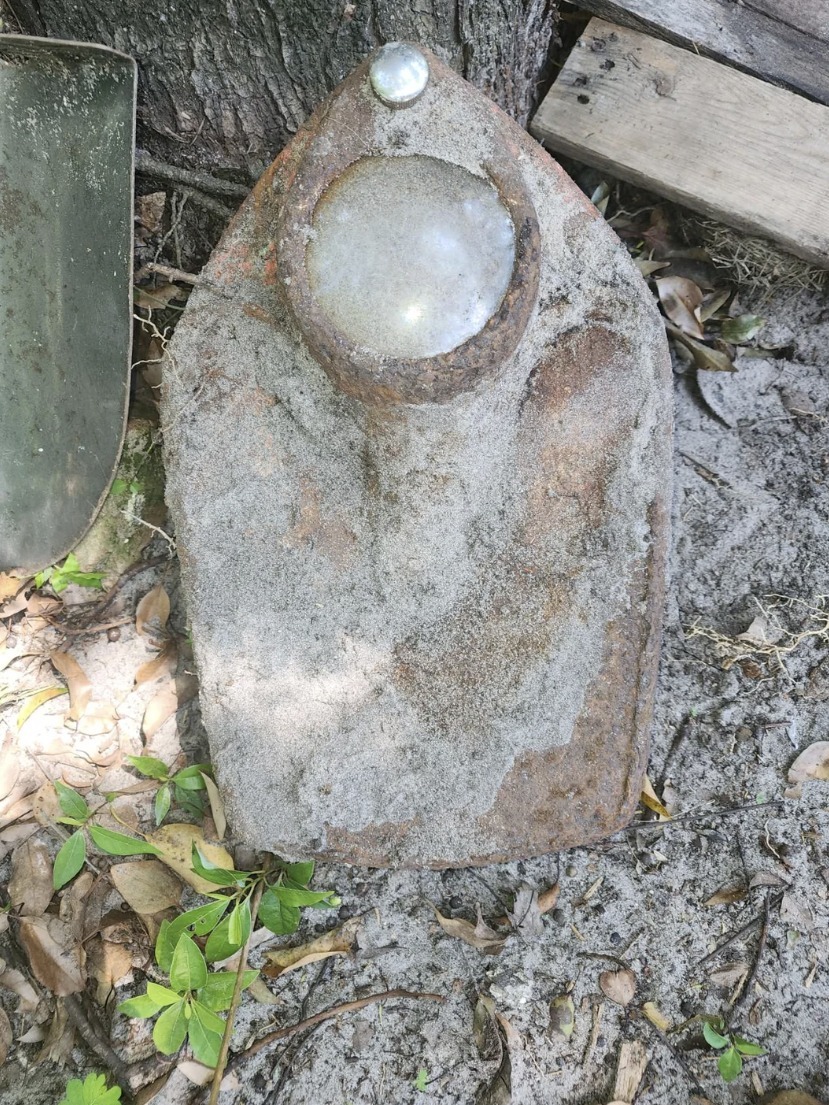ADVERTISEMENT
### **The Object in Question**
The Reddit user’s description provides us with several key details:
– **Size**: The object stands at 18 inches tall. This suggests that it is not a miniature item, but rather of a moderate size—small enough to be manageable but large enough to stand out.
– **Material Composition**: The object is described as being made of metal, with a significant glass bead embedded into it. The use of glass in the description implies that the object may have been crafted with precision, possibly for ornamental or decorative purposes.
– **Weight**: The object is said to be heavy, which immediately points to the possibility that it is made from dense metal or contains other heavy components.
– **No Mechanical or Moving Parts**: One of the most intriguing aspects is the lack of any visible mechanisms or moving parts. This immediately rules out many industrial or mechanical purposes for the object, leaving us to consider artistic, decorative, or symbolic purposes instead.
– **No Sound**: The fact that it does not produce sound is curious. It is common for objects with a purpose in sound creation (such as musical instruments or bells) to produce audible noise, so the absence of sound here may indicate that the object is not meant to serve as a tool for auditory use.
Given these attributes, we are left with a range of potential explanations. Let’s explore some of the most likely scenarios.
—
### **Possibility #1: A Decorative Art Piece**
One of the simplest and most plausible explanations for this object is that it is a decorative art piece, possibly created as a sculpture or artistic installation. Artists throughout history have experimented with metal and glass, and the combination of these materials has been used to create stunning and intricate works of art.
– **Glass and Metal in Art**: Both metal and glass are materials that are heavily utilized in art and design. Metal provides durability and structure, while glass can add an element of beauty, transparency, and color. The use of glass as a “bead” embedded within a metal structure could be a technique often seen in artistic sculptures, where beads or stones are used to create focal points or enhance the visual impact of the work.
– **Historical Precedents**: Throughout history, cultures such as the Romans, Egyptians, and later European artists incorporated metal and glass into their art pieces. The object in question could be a modern take on such historical art forms, adapted for contemporary tastes.
The fact that the object is heavy may also be indicative of a carefully crafted art piece with substantial mass, something an artist might use to ground the object or provide it with visual gravity. The metal could be cast or welded in intricate ways, and the glass bead may serve as a focal point.
—
### **Possibility #2: An Architectural Element**
Another intriguing possibility is that this object is an architectural element or part of a larger structure. The size, weight, and lack of moving parts might indicate that it was once part of a building, decorative feature, or furniture.
– **Architectural Hardware**: Metal objects with glass components were historically used in the design of buildings, gates, windows, or even chandeliers. In some cases, ornamental metal structures were paired with glass beads or stones to create elaborate, eye-catching designs.
– **Postmodern Design**: The combination of metal and glass, along with the size and weight, could also be associated with postmodern architectural design. In modern times, interior designers and architects often incorporate sculptural, non-functional elements into buildings and homes for aesthetic appeal.
If this object was once part of a door, window, or even a larger decorative structure, it would make sense that it would not make a sound or move. Its primary role may have been to serve as a structural or ornamental feature in a larger context.
—
### **Possibility #3: A Vintage or Antique Object**
The object could be a vintage or antique item that serves as a historical relic, perhaps dating back several decades or even centuries. The weight, materials, and craftsmanship could indicate that it was designed to serve a functional purpose in its original context, but over time, its function has been lost.
– **Antique Household Item**: Many antique objects, particularly those from the Victorian or early 20th-century periods, combined decorative and functional elements. It’s possible that the object was once part of a larger set of tools, furniture, or household items, and its original purpose has been obscured over time.
– **Antique Glassware**: The glass bead embedded into the metal could be part of an antique piece of glassware or a vintage collectible. Glass beads were often used in a variety of decorative objects, from lamps to vases to door handles.
If the object is indeed vintage, it might have a deeper history tied to the cultural practices and material trends of the time. Many vintage items have stories behind them, and understanding the context in which they were created can provide valuable insights into their purpose.
For Complete Cooking STEPS Please Head On Over To Next Page Or Open button (>) and don’t forget to SHARE with your Facebook friends
